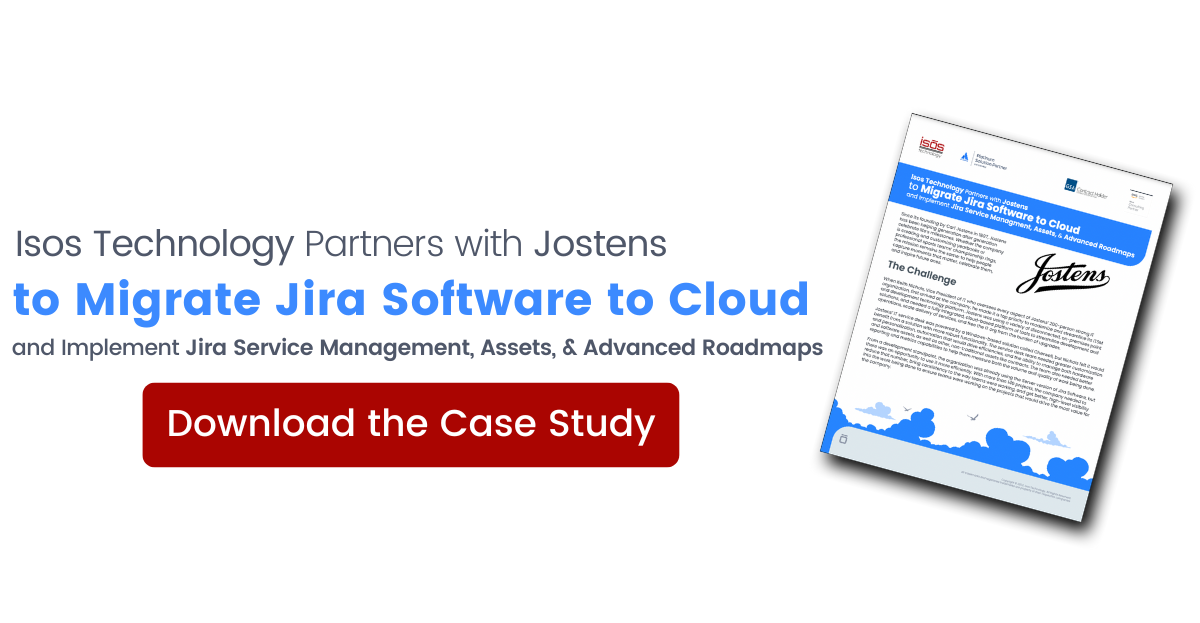 The Tempo suite of solutions includes some of the most popular apps in the Atlassian Marketplace, and for good reason! Not only do we use them ourselves at Isos Technology, we often implement and optimize them for our customers. To learn more about how Tempo can help companies move beyond basic time tracking, and get insights that will help them run their businesses more efficiently and effectively, we sat down with experts from Tempo and Isos and got the inside scoop.
The Tempo suite of solutions includes some of the most popular apps in the Atlassian Marketplace, and for good reason! Not only do we use them ourselves at Isos Technology, we often implement and optimize them for our customers. To learn more about how Tempo can help companies move beyond basic time tracking, and get insights that will help them run their businesses more efficiently and effectively, we sat down with experts from Tempo and Isos and got the inside scoop.
Our Experts
|
Nick Sommerfeld Atlassian Consultant Isos Technology |
Chris Chappelear Product Marketing Manager Tempo |
1. Chris, when people think of Tempo, they often think of Timesheets, but there’s a lot more to the Tempo suite of solutions than that, right?
Absolutely! Our flagship product, Timesheets, is a really flexible, customizable solution for tracking time, but with Tempo’s whole suite of solutions, not only can you track time, you can plan, manage, and understand it. Planner, for example, is a resource planning tool that helps you get the right people on the right projects at the right time, and Cost Tracker lets you put dollar amounts to people’s time, so you can track your costs and make sure you stay on budget. Reports are another crucial part of the picture for seeing how much time either a single user or a whole team is spending on a project or an epic. You can also use Tempo custom fields like Team, Role, and Account to better organize your data to make it as useful as possible for your organization.
2. Nick, at Isos Technology, you not only recommend Tempo solutions to your clients, but you also use them to manage your own time tracking—can you tell me about that?
As a business consulting services organization, Isos Technology has very complex time-tracking needs. We have different team members working in different roles at varying rates, and each of our clients may have several projects going at once. Add to it that not every hour that someone works is billable time, so we need to differentiate between billable and non-billable hours. We see this level of complexity with many of our customers, too. They have tons of projects with people in different roles working on them—developers, QA engineers, project managers, etc. Tempo can handle all this, and virtually any other situation, no matter how many moving parts there are, and we can even apply different rates to different people. Tempo solutions really are best-in-class apps for companies like ours with complex time-tracking and time-management needs.
3. Chris, what kinds of companies can benefit from Tempo, and who within those companies gets the most out of it?
From an industry perspective, there are Tempo users in virtually every field. Any company that uses Jira can benefit from Tempo. We have customers in software, IT services, aerospace, communications, financial data services—you name it!
At the organizational level, Tempo solutions really are for everyone—everyday Jira users, program managers, project managers, and even company leaders. There are a lot of different ways users can log time, so for them, the experience is pretty convenient. Team leads can use Tempo to do resource planning, make sure projects are progressing the way they should, and even see how many hours are going into them relative to budget.
4. Nick, how can a company that’s already using Tempo benefit from working with an Atlassian Solution Partner like Isos Technology?
As anyone who uses Jira—or any other Atlassian solution—knows, it’s an incredibly powerful and flexible tool. It can be configured in almost unlimited ways, depending on the way you work and your business objectives. That’s true of Tempo, too. With an Atlassian Solution Partner, you can have a strategic discussion about your business practices, ways of working, and team and corporate goals. Then, we can configure your Atlassian tools and Marketplace Apps like Tempo in ways that meet your specific use case and needs.
One important thing to discuss is what type of information you want to get out of Tempo beyond out-of-the-box reporting capabilities. There is a whole lot of data in your system, and with custom coding, an Atlassian Solution Partner can surface that and make it more useful to you in custom-built reports.
5. Chris, what types of problems can the Tempo suite of solutions solve?
The biggest problem Tempo solutions solve for companies is lack of visibility into work being done, both in terms of how it’s progressing and how much it’s costing. Tempo makes it easy to track who is working on what projects and how much time is being spent, which is especially important now with so many people working remotely. Once you understand where time is being spent, you can make better estimates on future projects based on time tracked to previous projects. And it also helps with resource planning. You can see who is available to work on projects, when they are available, and what their skill sets are, so you can get the right people on projects at the right time to keep things moving forward.
In terms of financial visibility, you can see how many hours a project is taking in real time, and how much of that work can be billed to customers, so it helps you see problems early on and manage budget creep. You can also differentiate between CAPEX and OPEX expenses, which is important for receiving valuable tax credits.
6. Nick, you’ve worked on a number of projects for Isos’ customers that included implementing and/or optimizing their use of Tempo. What do you want people to know about it?
If I had to boil it down to one thing, it’s that Tempo has the power to actually change the way you work for the better. It’s one of the most popular apps in the Atlassian Marketplace, and it’s really easy to set up and get started with it. As you begin to rely on it more, though, you may get to a point where it makes sense to consult with an expert to ensure you’re taking full advantage of everything it has to offer. That’s where an Atlassian Solution Partner like Isos comes in. We can help you think through your business practices, make sure Tempo is configured so that you can work as efficiently and effectively as possible, and really set you up to get all the data and reporting you need on the back end. In short, we can help you get the most out of your investment in this business critical tool.
7. Chris, how does Structure for Jira fit into this? Who is it for and what problems does it solve?
That’s a great question. Structure is a big-picture project management tool that enables you to view your projects and Jira issues in flexible hierarchies, while Tempo is more about productivity at a tactical level—planning, tracking, and managing work, and getting real-time, actionable insights on it. Where things really get interesting, though, is around the integration between the two products. Companies that have both solutions can actually take some of the data recorded in Tempo (such as the number of billable hours associated with a project), view it in Structure, and see what it means in the context of their portfolio. They come away with a much better, more holistic view of a project's progress and success.
I think of it like this: data is just a book on a shelf until you read it and put it into action. That’s what Tempo and Structure give companies the ability to do. They take that data and turn it into insights that help companies make better business decisions.
##
Thanks so much, Chris and Nick, for taking the time to talk to us about Tempo!
Additional Resources
Get more information about Tempo
Sign up to receive more great content
Learn more about Atlassian and how Isos can help by signing up to receive our latest blogs, eBooks, whitepapers and more.
















